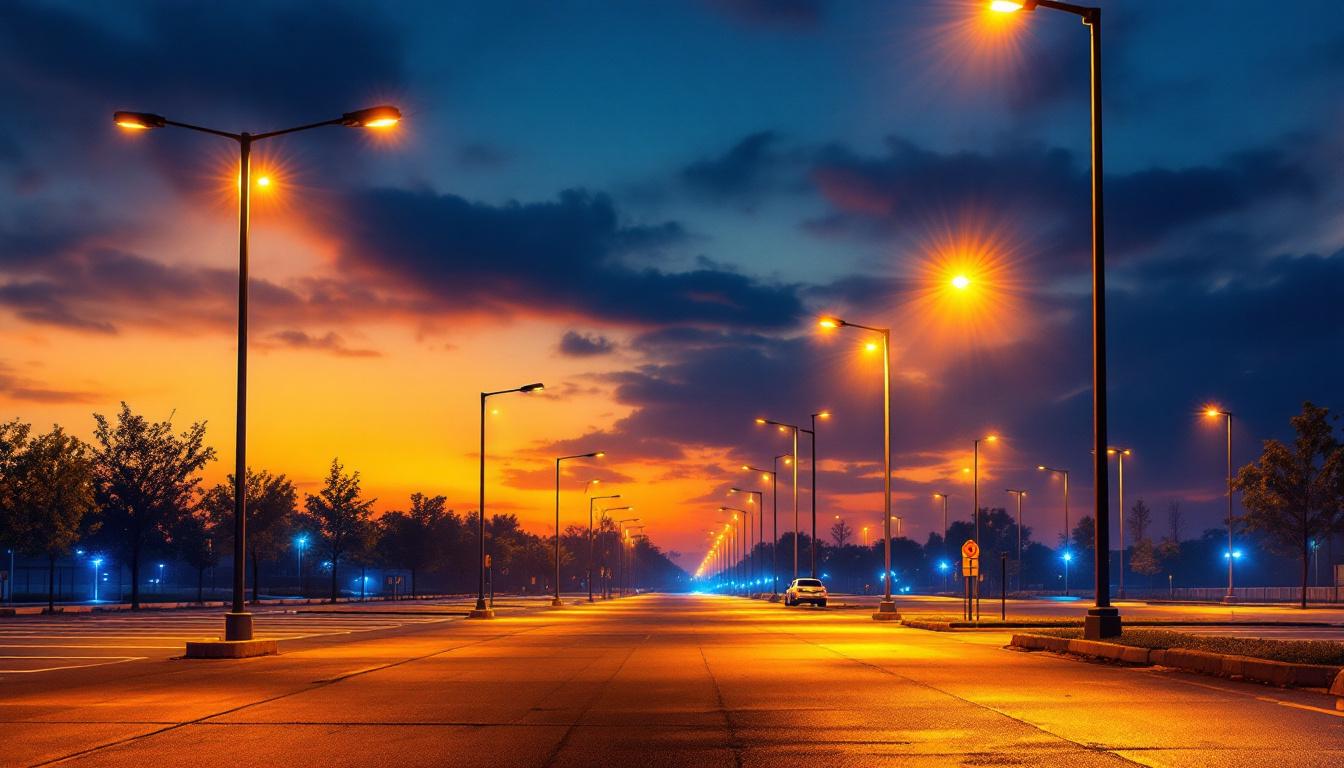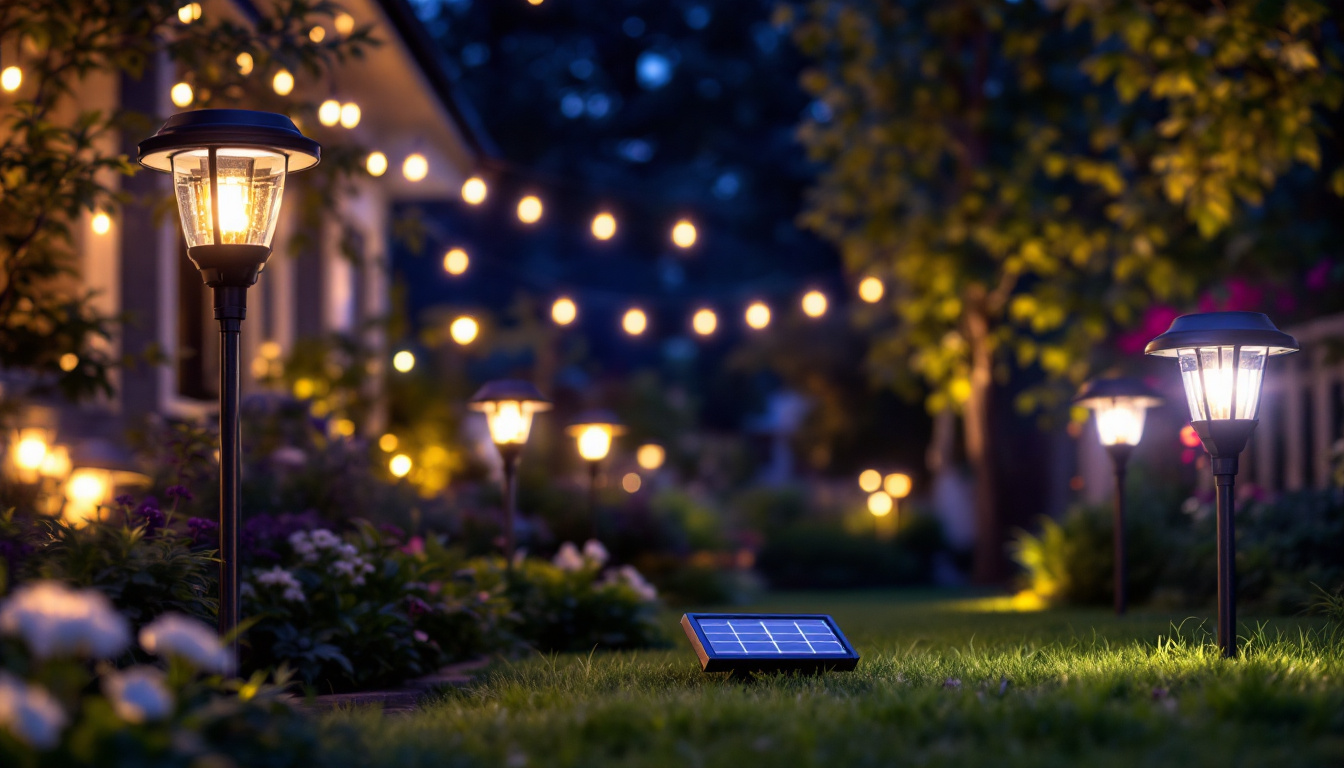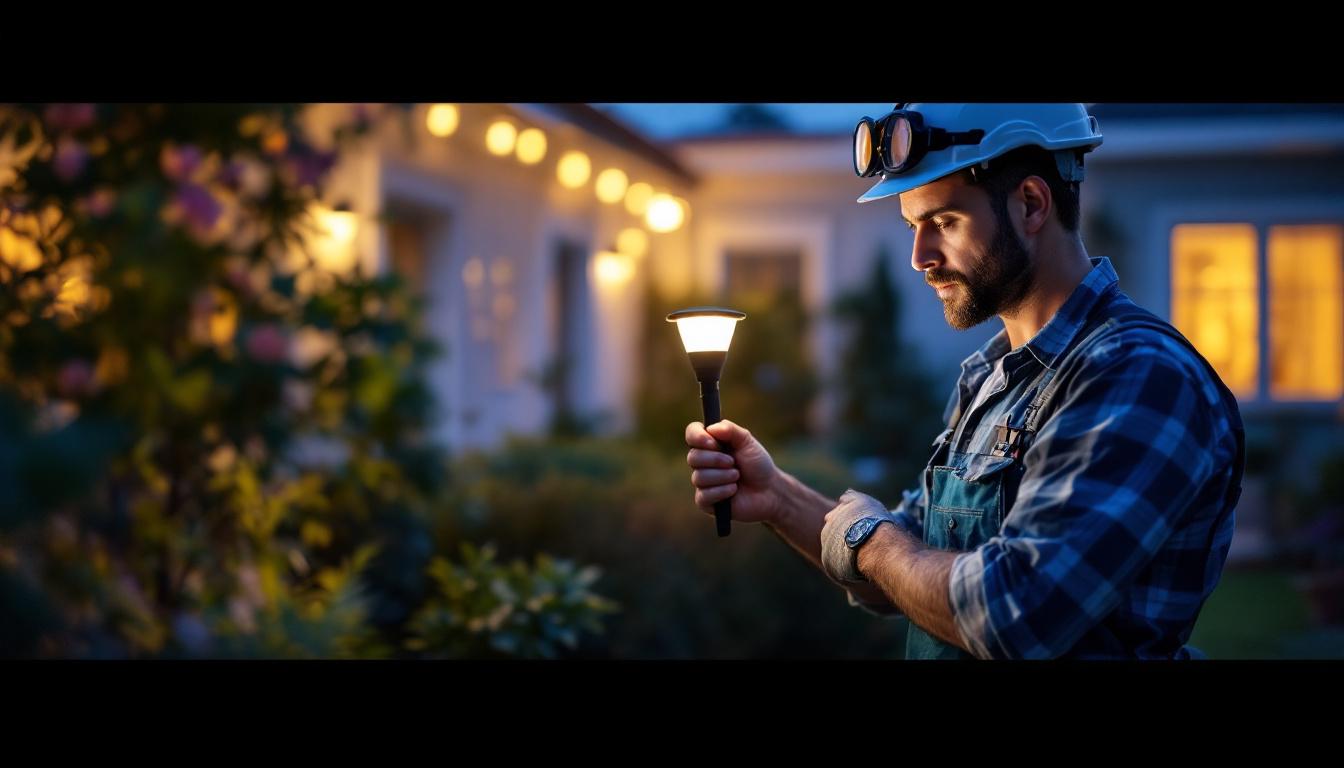
Effective lighting is crucial for parking lots, ensuring safety, security, and accessibility for both vehicles and pedestrians. As a lighting contractor, understanding the various options available for parking lot street lights is essential for making informed decisions that meet the needs of clients while adhering to budget constraints.
This article explores traditional parking lot street lights and their alternatives, examining the pros and cons of each option. By the end, lighting contractors will have a clearer understanding of what to choose for their projects.
When considering parking lot lighting, it’s important to recognize that the right illumination can significantly enhance the overall user experience. Well-lit areas not only deter criminal activity but also reduce the risk of accidents, making it easier for drivers and pedestrians to navigate the space safely. Moreover, modern lighting solutions can contribute to energy efficiency and sustainability, which are increasingly important factors for many clients. For instance, LED lights have gained popularity due to their long lifespan and lower energy consumption compared to traditional incandescent or halogen bulbs, allowing for reduced operational costs over time.
In addition to energy efficiency, the design and placement of lighting fixtures play a vital role in maximizing visibility. Factors such as pole height, spacing, and the type of light distribution can all influence how effectively a parking lot is illuminated. For example, using fixtures that provide a wide beam spread can help eliminate dark spots, while strategically placing lights at key points, such as entrances and exits, can enhance safety and accessibility. Furthermore, advancements in smart lighting technology are paving the way for more adaptive solutions that can adjust brightness based on real-time conditions, providing an even more tailored approach to parking lot illumination.
Traditional street lights have long been the standard for illuminating parking lots. These fixtures typically use high-intensity discharge (HID) lamps, such as metal halide or high-pressure sodium lights. While they have served their purpose for decades, the landscape of lighting technology is evolving.
One of the primary advantages of traditional parking lot street lights is their high lumen output. This means they can illuminate large areas effectively, making them suitable for expansive parking lots. Additionally, HID lamps have a long lifespan, often lasting several years before requiring replacement.
Another benefit is the established infrastructure for maintaining and repairing these fixtures. Many contractors are familiar with the installation and upkeep of traditional street lights, reducing the learning curve for new projects. The familiarity with these systems also means that replacement parts are generally readily available, ensuring that any necessary repairs can be made quickly and efficiently, minimizing downtime.
Despite their advantages, traditional parking lot street lights come with several drawbacks. One significant issue is energy consumption. HID lamps are not as energy-efficient as newer technologies, leading to higher operational costs over time. This inefficiency not only affects the budget of businesses but also contributes to a larger carbon footprint, raising concerns about environmental sustainability.
Moreover, these lights often take time to warm up, resulting in delayed illumination after being turned on. This can be a safety concern in emergency situations where immediate lighting is required. Additionally, the color temperature of HID lights can create a harsh, yellowish glow that may not provide the best visibility for drivers and pedestrians, potentially leading to safety hazards. As communities increasingly prioritize safety and sustainability, the limitations of traditional street lights are becoming more pronounced, prompting a shift towards more advanced lighting solutions.
Light Emitting Diodes (LEDs) have emerged as a popular alternative to traditional street lights. Known for their energy efficiency and longevity, LEDs are transforming the way parking lots are illuminated.
One of the most significant advantages of LED lighting is its energy efficiency. LEDs consume substantially less power than traditional HID lamps, which can lead to significant cost savings for clients over time. Additionally, they have a longer lifespan, often exceeding 25,000 hours, which reduces maintenance and replacement costs.
LEDs also provide instant illumination, eliminating the warm-up time associated with traditional lights. This feature enhances safety, particularly in high-traffic areas where visibility is crucial. Furthermore, LEDs offer better color rendering, allowing for improved visibility and a more pleasant environment for users.
While LEDs present numerous benefits, they are not without challenges. The initial cost of LED fixtures can be higher than traditional options, which may deter some clients. However, it is essential to consider the long-term savings on energy and maintenance when evaluating the total cost of ownership.
Another consideration is the potential for glare. If not properly installed or shielded, LEDs can create uncomfortable brightness levels for drivers and pedestrians. Lighting contractors must be mindful of fixture placement and design to mitigate this issue.
Solar-powered lighting has gained traction as an eco-friendly alternative for parking lots. Utilizing renewable energy, solar lights can significantly reduce the carbon footprint of a lighting project.
One of the most compelling benefits of solar-powered lighting is its independence from the electrical grid. This feature can be particularly advantageous in remote locations where extending power lines is impractical or cost-prohibitive. Additionally, solar lights require minimal maintenance, as they typically have no wiring and fewer components that can fail.
Moreover, solar-powered lights contribute to sustainability goals, making them an appealing choice for environmentally conscious clients. They can also enhance the aesthetic appeal of a parking lot, providing a modern and innovative look.
Despite their advantages, solar-powered lights have limitations that contractors should consider. The effectiveness of solar lights is heavily dependent on sunlight availability. In regions with limited sunlight or during winter months, the performance of solar lights may be compromised.
Additionally, the initial investment can be high, especially for high-quality solar fixtures. While they may save money in the long run, the upfront costs can be a barrier for some clients. Lighting contractors must weigh these factors when recommending solar options.
Hybrid lighting solutions combine traditional and modern technologies to create a versatile and efficient lighting system. These systems can integrate LED fixtures with solar panels or utilize smart technology to optimize energy use.
Hybrid systems offer the best of both worlds, providing the high lumen output of traditional lights while benefiting from the energy efficiency of LEDs and the sustainability of solar power. This combination can result in substantial energy savings and reduced operational costs.
Moreover, hybrid systems can be designed to adapt to varying conditions. For instance, during peak usage hours, the system can rely on traditional lighting, while off-peak hours can utilize solar power or dimmed LEDs, maximizing efficiency.
While hybrid systems are innovative, they can also be complex to install and maintain. The integration of different technologies requires specialized knowledge and expertise, which may not be readily available to all contractors.
Additionally, the initial costs can be higher due to the combination of technologies involved. Clients may need convincing of the long-term benefits to justify the investment. Lighting contractors must be prepared to provide detailed analyses to support their recommendations.
When selecting lighting solutions for parking lots, several factors must be taken into account. Understanding these elements can help lighting contractors make informed decisions that align with client needs and project requirements.
The size and layout of the parking lot play a significant role in determining the appropriate lighting solution. Larger lots may require higher lumen output and more robust fixtures, while smaller lots might benefit from energy-efficient options that provide adequate illumination without excessive power consumption.
Additionally, the layout can influence fixture placement and design. Areas with high pedestrian traffic may require different lighting strategies compared to sections primarily used for vehicle parking.
Understanding the client’s budget and goals is crucial for selecting the right lighting solution. Some clients may prioritize upfront costs, while others may focus on long-term savings and sustainability. Lighting contractors should engage in open discussions with clients to identify their priorities and tailor recommendations accordingly.
Moreover, clients’ goals may extend beyond mere illumination. For instance, some may seek to enhance the aesthetic appeal of their property, while others may prioritize safety and security. Identifying these goals can guide the selection process effectively.
Compliance with local regulations and safety standards is paramount when choosing lighting solutions. Many jurisdictions have specific requirements regarding light levels, fixture types, and energy efficiency. Lighting contractors must stay informed about these regulations to ensure that their projects meet all necessary standards.
Furthermore, safety considerations should be at the forefront of any lighting project. Proper illumination can deter criminal activity and enhance the overall safety of the parking lot, making it essential to choose fixtures that provide adequate coverage and visibility.
In the ever-evolving landscape of parking lot lighting, lighting contractors face a myriad of options, each with its own advantages and challenges. Traditional street lights, LED fixtures, solar-powered lights, and hybrid systems all offer unique benefits that can cater to different project needs.
Ultimately, the choice of lighting solution should be guided by a thorough understanding of the project requirements, client goals, and regulatory considerations. By carefully evaluating these factors, lighting contractors can provide effective, efficient, and sustainable lighting solutions that enhance the safety and usability of parking lots.
As technology continues to advance, staying informed about the latest trends and innovations in lighting will empower contractors to make the best choices for their clients, ensuring successful projects that stand the test of time.
Ready to elevate your parking lot lighting projects with the best solutions on the market? Look no further than LumenWholesale, where we offer an extensive range of spec-grade lighting products at unbeatable wholesale prices. Say goodbye to local distributor markups and hello to superior quality without the inflated costs. Our commitment to reliability and high-performance lighting ensures your projects shine with efficiency and sustainability. Plus, with free shipping on bulk orders, you can enjoy the ultimate value without any hidden fees. Don’t compromise on quality or affordability—choose LumenWholesale for a seamless blend of both. Wholesale Lighting at the Best Value is just a click away.

Discover how outside lights with motion sensors are revolutionizing the work of lighting contractors by enhancing energy efficiency and security.

Discover the top strategies lighting contractors use to enhance outdoor spaces with solar lighting.

Discover how LED outside solar lights are transforming the landscape for lighting contractors.

Discover the transformative power of energy-efficient interior garage light fixtures.